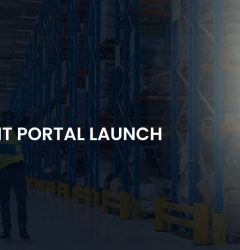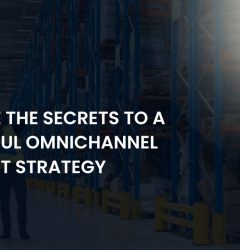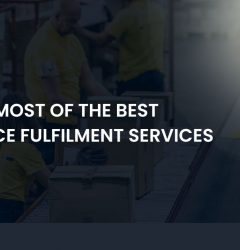03 May
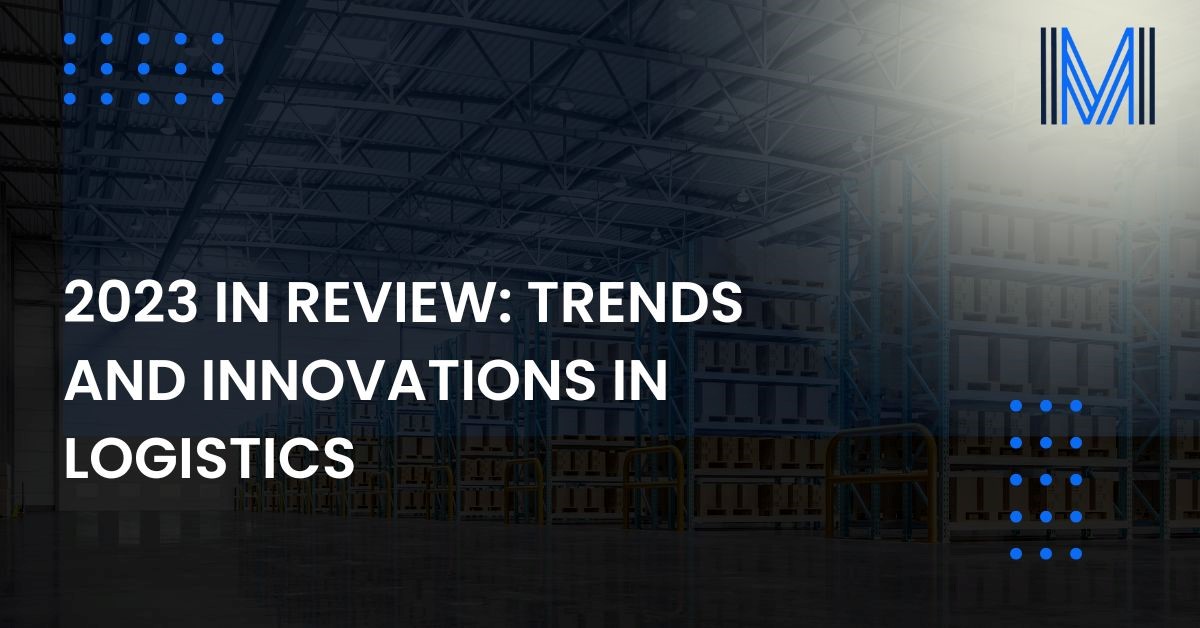
Technology in the logistics sector is constantly evolving, and throughout this year, we’ve seen several businesses revolutionise how they handle order fulfilment. Currently, the logistics market is valued at $8.96 trillion and is expected to grow in the upcoming years.
This growth is partly thanks to innovative strategies that optimise the supply chain. Evolving technology has impacted every sector, and the logistics department is no different. 3PLs have used a variety of techniques to maintain efficiency and reduce errors. Let’s look at the trends and innovations that shaped the logistics sector in 2023.
Logistics Industry Trends and Innovations in 2023
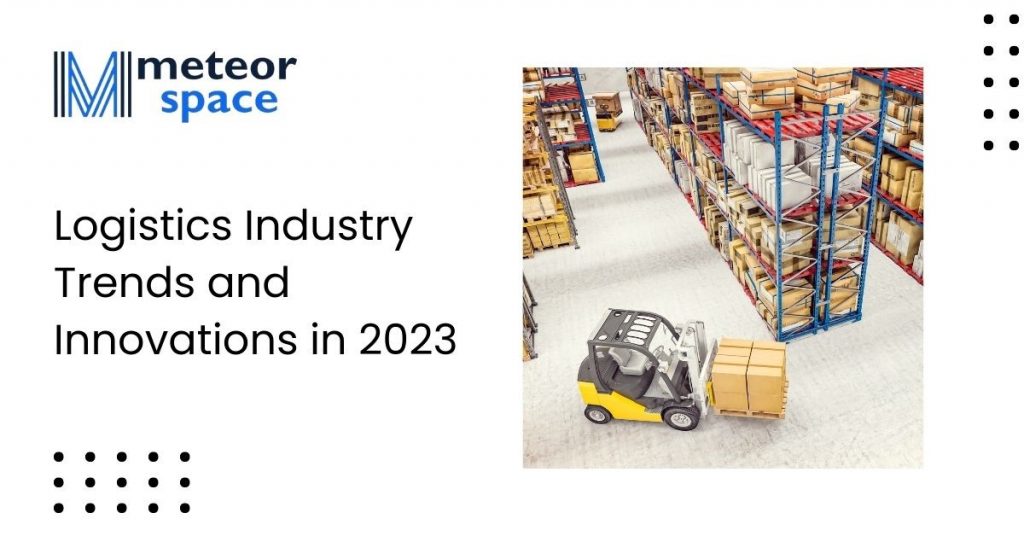
The logistics sphere is an ever-evolving space with companies looking at new ways to enhance the supply with the least amount of disruptions possible. Technological tools are also a great way of keeping costs down without affecting the quality of service.
Here’s a look at trends and innovations in logistics during 2023.
Automation
Automation is quickly becoming an integral part of various sectors, including logistics. Warehouse automation is an excellent way of making the overall operation more efficient and cutting down manual labour.
The primary purpose of this trend is to find the best ways of conducting operations without little to no issues. With this method, there’s also an overall reduction in human errors and delays in the supply chain.
Automation allows your in-house team to find ways to optimise the workflow with technology. Another great benefit of automation is that it reduces health and safety risks for workers.
Manual moving and lifting of heavy goods can pose a significant hazard and problem for many warehouse operation managers. To eliminate this risk and maintain efficiency, logistic spaces use a semi-automated method for lifting, allowing operators to move items of various weights and sizes.
Automation allows speed and precision while significantly reducing the risk of injuries. With an automated picking process, there’s also little chance of heavy objects being damaged during their transport. Machine-operated picking uses careful parameters to lift items, reducing any breakages.
Additionally, automation provides real-time tracking and visibility; it improves safety conditions in the workplace and the overall working conditions for staff members.
However, it’s crucial to note that while automation has several benefits, it’s not always best to become fully automated. In the upcoming year, logistics companies should adopt a semi-automated approach as the best way to optimise their corporations.
Supply Chain Flexibility
Supply chain flexibility was one of the main focuses for logistics companies in 2023. In recent years, world conflicts and the pandemic have harmed the global supply chain, leading to delays and disruptions everywhere. These issues highlighted the weakness in logistics worldwide and became a lesson for operation managers to increase warehouse agility.
To combat these issues, logistics companies overhauled their operations to become more flexible. This agility is also great for meeting the ever-changing demands for goods and services.
Flexibility will allow businesses to quickly respond to fluctuations in their supply chain while reducing extra costs and maintaining efficiency. Additionally, flexible operation gives logistic companies an edge over their competitors.
Public opinions on goods are constantly changing, so your supply chain should be adept at handling any such fluctuations. Identifying and responding to these fluctuations is a key component of supply chain flexibility. You must have an in-depth knowledge of the market, customers and technological trends to carry this out efficiently.
A company should be able to make quick decisions based on customer preferences and quick trends. With supply chain flexibility, companies can manage their stocks better, increase their profits and minimise costs.
Logistics companies should adopt collaborative and agile strategies for their operations to achieve better flexibility. Another way to maintain supply chain agility and minimise delays is by conducting a risk management approach. Create backup plans and other methods to be well-prepared in the face of unexpected disruptions.
Omnichannel Fulfilment
E-commerce has been rising in popularity recently, and 2023 was no different. Many customers prefer purchasing their products online instead of going to physical stores.
Social media selling has also influenced consumers’ purchasing habits, with many purchasing goods on mobile devices. With that in mind, logistics companies should provide fulfilment with various selling channels, and the best way to do so is by providing omnichannel fulfilment.
Omnichannel fulfilment uses a strategy that allows consumers to purchase products from multiple channels. These include online retail websites, mobile apps, specialised marketplaces, social campaigns and more.
All sales channels are integrated with a single inventory storage system to fulfil and deliver every order efficiently. Businesses can use a wide array of methods to complete omnichannel fulfilment.
The main purpose behind omnichannel marketing is to create a pleasant shopping experience for customers and provide them with convenient access to products.
Once the customers place their order on the selling channels, the items are flagged in the inventory, and the customers receive a confirmation email. Staff at the storage centre pick up the items, package them appropriately and deliver them on time.
The great thing about omnichannel fulfilment is that customers can get their items from anywhere. Logistic companies should be equipped to handle multichannel fulfilment without delays or disruptions in the supply chain.
Optimised Last Mile Delivery
One of the significant challenges affecting package delivery is last-mile delivery. This is when your item leaves the storage warehouse and is en route to the consumer’s location. In order words, this is the last step in the supply chain, which faces many challenges.
Between failed deliveries and traffic delays, your last-mile delivery efforts can ruin an overall great logistics strategy. All these problems will lead to high delivery costs. On average, last-mile delivery accounts for 53% of total shipping costs.
Logistic sectors must optimise delivery routes to avoid creating a financial burden on their supply chain. Businesses should aim to match shipments with the correct vehicle mode and service level to conduct on-time delivery. Work with trusted and vetted carriers to ensure items reach customers quickly and in good condition.
Improved Customer Communication
Efficient order fulfilment encourages brand loyalty and returning customers. Good communication is essential to fulfilment, significantly impacting shoppers’ behaviours and their need to purchase. With so many communication tools available this year, logistic facilities were able to better communicate between suppliers and consumers.
Logistics companies work with manufacturers directly to provide clear communication over packing, picking and shipping. In your omnichannel logistics strategy, always aim to send shoppers post-purchase emails or texts to maintain a direct line of communication. This correspondence will assure customers that their orders are confirmed and will be dispatched soon.
With multichannel logistics, you must ensure that communication is possible from all sales routes and that the messaging is clear. Additionally, offer consistent updates to keep in the loop. You can also allow customers to contact couriers or dedicated shipping staff directly for more information.
Internet of Things Technology
If your logistics business is undertaking omnichannel fulfilment, you must integrate your operation with the Internet of Things. IoT has revolutionised the way companies conduct fulfilment this year.
Such technology makes Organisation easy, allowing operation managers control over various supply channels. With a fully intelligent logistics system, businesses can keep track of their stock levels in real-time and track delivery and shipments.
Green Logistics
With rising awareness of environmental issues, many consumers are demanding greener shipping methods. In 2023, logistic companies adopted several strategies to reduce waste and maintain a sustainable operation.
Green logistics are comprised of several strategies that encourage companies to minimise their pollution and, at the same time, increase operational efficiency. The main goal of green logistics is to conserve resources, reduce gas emissions, and apply waste management policies in logistics warehouses. All these policies should be implemented alongside quality customer care to maintain their satisfaction.
This year, businesses had access to various tools to adopt green policies in their supply chain. With renewable energy becoming more accessible, logistic companies used such sources to power their warehouse and delivery fleets.
With the amount of packing materials used, the logistics industry produces a lot of waste. Green warehouses have implemented several strategies to reduce waste and maintain a cleaner, more sustainable operation.
Use of Environmentally-Friendly Delivery
Delivery systems are integral to logistic companies, and they provide an opportunity to adopt a greener approach. Several 3PLs used green initiatives this year to make their dispatch services cleaner and environmentally friendly. One way they did so was by optimising delivery routes.
You must create an excellent transportation management system to find the most effective delivery route. Think of the weather conditions, traffic patterns and the amount and weight of items when building an optimised route.
Another meaningful way 3PLs made green changes was by using electric and alternative fuel transportation. The delivery and transportation industry significantly contributes to greenhouse gas emissions.
The environmental impact of such vehicles is significantly reduced through alternative fuels such as electric, biodiesel, and hydrogen vehicles. Additionally, many logistics companies have adopted energy-saving facilities through trash reduction initiatives, sustainable packaging, and recycling.
Cloud Computing
Cloud computing became an integral part of logistic facilities this year. This technology has benefited various industries, including the logistics businesses. With cloud computing, companies can manage scalability and reduce operational costs.
Cloud computing also allows operation managers to handle their work from anywhere, making problem-solving easier. Since everything is based on the cloud, information is easily accessible from any connected device.
Another great thing about cloud computing is that data isn’t stored in one place, so there’s better security and less hardware dependence. This also makes it easy to maintain hardware long-term.
Clear communication and open collaboration are key in any logistics facility. Cloud-based technology makes it easy to share information, collaborate on ideas, and conduct communication between suppliers and customers, regardless of their location.
Cloud computing also allows more flexibility to keep up with new technological advancements. In the upcoming years, there’s no doubt that logistics facilities will have access to even more innovative tools. Cloud computing will make this transition more manageable as it’s not tied to ageing hardware.
How Meteor Space Can Help With Your eCommerce
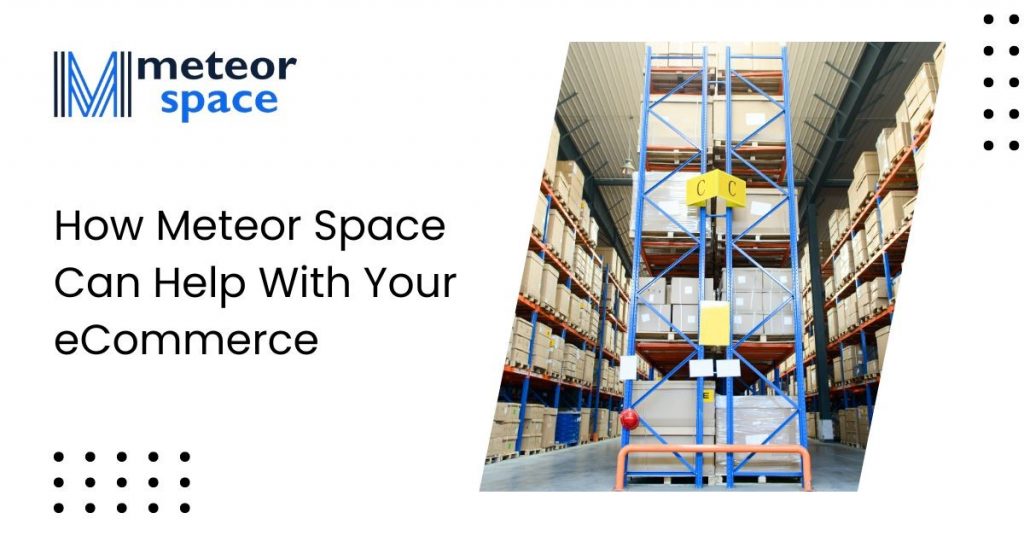
If you want a quality 3PL service that provides excellent order fulfilment services with eCommerce integration, go with Meteor Space. We offer many features to help online stores with all packaging and shipping needs.
Meteor’s expert team members use the latest tools and techniques to provide a state-of-the-art logistics experience. Our technology-based services offer excellent management and organisation programs to help you stay on top of your inventory.
You can also access Meteor’s easy-to-use web portal, fast shipping, efficient pick and pack and much more. Here’s a look at some additional features of our fulfilment service.
Technology-Driven Inventory Management
Meteor Space provide an efficient warehouse management system that uses the latest technology to keep your stock safe and organised. This software automates the entire order fulfilment process and allows 360-degree visibility of all operations.
With Meteor’s WMS, you can monitor stock levels, replenish goods and create accurate forecasts. In addition, our clients have access to end-to-end tracking, so you know exactly when your products leave the warehouse and when they reach clients.
Green Logistics
Meteor Space is a bonded green fulfilment warehouse providing excellent service that complies with sustainability standards. We are an ideal partner for any environmentally friendly brand looking to reduce its carbon footprint through green packaging and shipping.
Packaging material is one of the biggest culprits for high carbon emissions, so we at Meteor Space use green packing methods to reduce our carbon footprint. We use kitting and bundling to avoid using excessive boxes and materials without compromising the safety of items.
Our packers also use paper alternatives and other sustainable materials wherever possible to reduce the use of plastics. We also add recycled packaging to reduce waste, and our couriers can help you dispose of the packaging sustainably.
Meteor Space also optimises vehicle routes to lower emissions by pre-planning stops to increase drop density. There are shorter times between our stops because our delivery drivers, dispatches and receivers maintain strong communication.
Customisable Storage System
Rigid storage options can often turn away many online retailers, but you won’t have to worry about this problem with Meteor Space. We understand that every business has unique demands; therefore, we offer customisable storage options tailored to your requirements.
Real-time Inventory Tracking and Alerts
Our custom warehouse software is designed with the latest technology so you have the best data available. Our accurate inventory forecasting will allow you to keep up with customers’ demands without blockage in the delivery system. With this data, you can also provide full transparency to your customers and update them on their order status.
